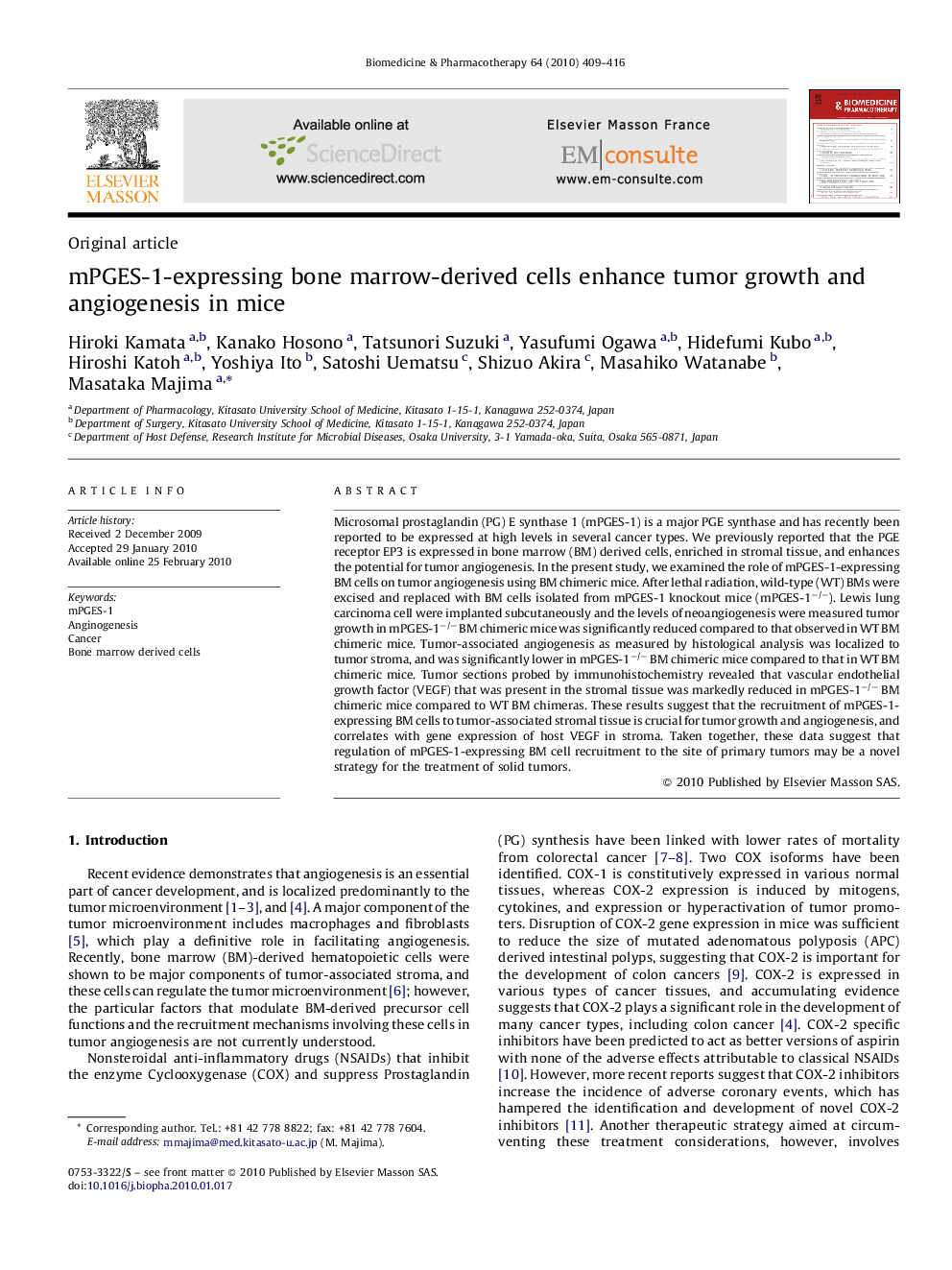| Article ID | Journal | Published Year | Pages | File Type |
|---|---|---|---|---|
| 2524985 | Biomedicine & Pharmacotherapy | 2010 | 8 Pages |
Microsomal prostaglandin (PG) E synthase 1 (mPGES-1) is a major PGE synthase and has recently been reported to be expressed at high levels in several cancer types. We previously reported that the PGE receptor EP3 is expressed in bone marrow (BM) derived cells, enriched in stromal tissue, and enhances the potential for tumor angiogenesis. In the present study, we examined the role of mPGES-1-expressing BM cells on tumor angiogenesis using BM chimeric mice. After lethal radiation, wild-type (WT) BMs were excised and replaced with BM cells isolated from mPGES-1 knockout mice (mPGES-1−/−). Lewis lung carcinoma cell were implanted subcutaneously and the levels of neoangiogenesis were measured tumor growth in mPGES-1−/− BM chimeric mice was significantly reduced compared to that observed in WT BM chimeric mice. Tumor-associated angiogenesis as measured by histological analysis was localized to tumor stroma, and was significantly lower in mPGES-1−/− BM chimeric mice compared to that in WT BM chimeric mice. Tumor sections probed by immunohistochemistry revealed that vascular endothelial growth factor (VEGF) that was present in the stromal tissue was markedly reduced in mPGES-1−/− BM chimeric mice compared to WT BM chimeras. These results suggest that the recruitment of mPGES-1-expressing BM cells to tumor-associated stromal tissue is crucial for tumor growth and angiogenesis, and correlates with gene expression of host VEGF in stroma. Taken together, these data suggest that regulation of mPGES-1-expressing BM cell recruitment to the site of primary tumors may be a novel strategy for the treatment of solid tumors.
